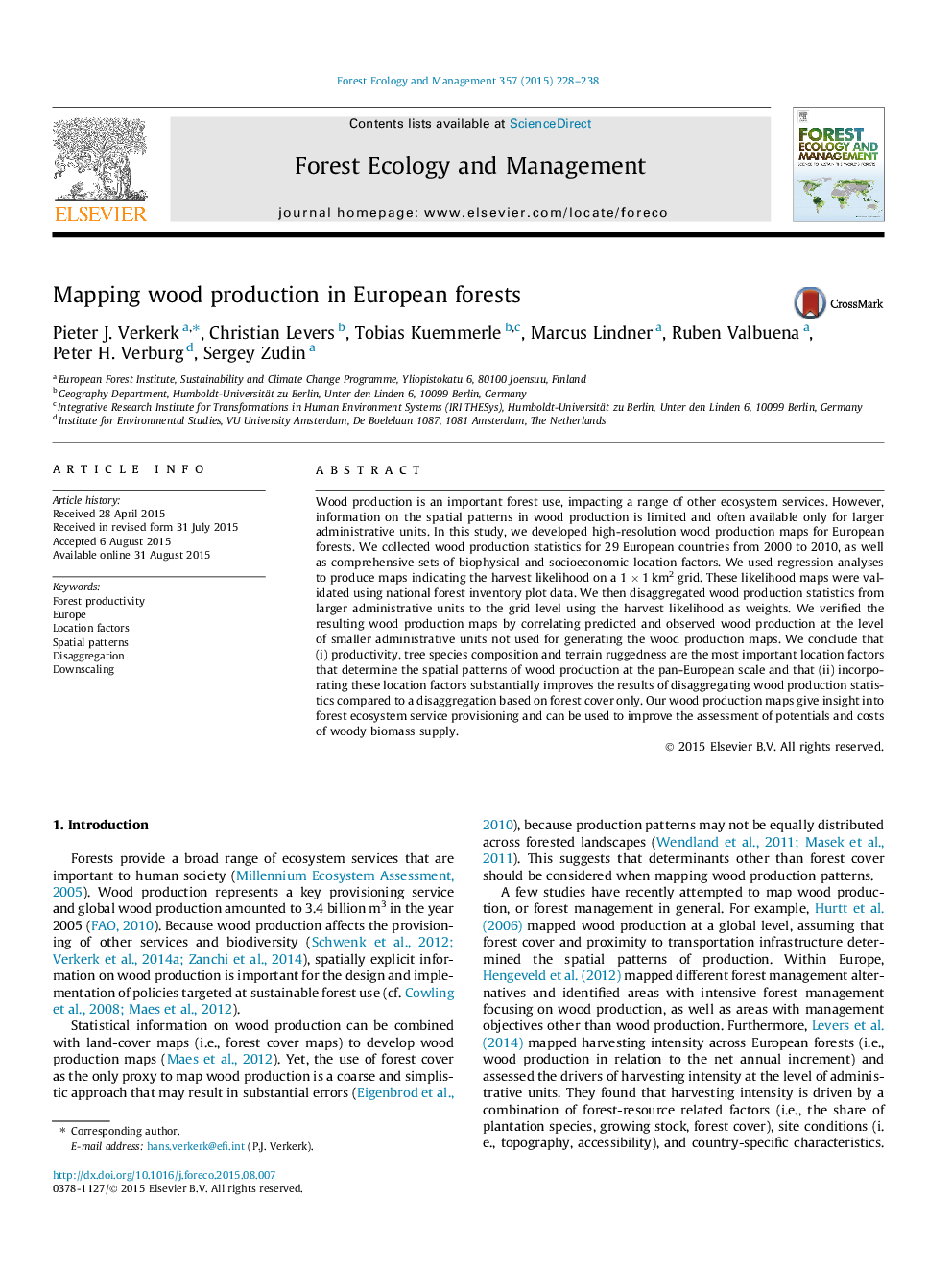| Article ID | Journal | Published Year | Pages | File Type |
|---|---|---|---|---|
| 6542728 | Forest Ecology and Management | 2015 | 11 Pages |
Abstract
Wood production is an important forest use, impacting a range of other ecosystem services. However, information on the spatial patterns in wood production is limited and often available only for larger administrative units. In this study, we developed high-resolution wood production maps for European forests. We collected wood production statistics for 29 European countries from 2000 to 2010, as well as comprehensive sets of biophysical and socioeconomic location factors. We used regression analyses to produce maps indicating the harvest likelihood on a 1Â ÃÂ 1Â km2 grid. These likelihood maps were validated using national forest inventory plot data. We then disaggregated wood production statistics from larger administrative units to the grid level using the harvest likelihood as weights. We verified the resulting wood production maps by correlating predicted and observed wood production at the level of smaller administrative units not used for generating the wood production maps. We conclude that (i) productivity, tree species composition and terrain ruggedness are the most important location factors that determine the spatial patterns of wood production at the pan-European scale and that (ii) incorporating these location factors substantially improves the results of disaggregating wood production statistics compared to a disaggregation based on forest cover only. Our wood production maps give insight into forest ecosystem service provisioning and can be used to improve the assessment of potentials and costs of woody biomass supply.
Related Topics
Life Sciences
Agricultural and Biological Sciences
Ecology, Evolution, Behavior and Systematics
Authors
Pieter J. Verkerk, Christian Levers, Tobias Kuemmerle, Marcus Lindner, Ruben Valbuena, Peter H. Verburg, Sergey Zudin,
